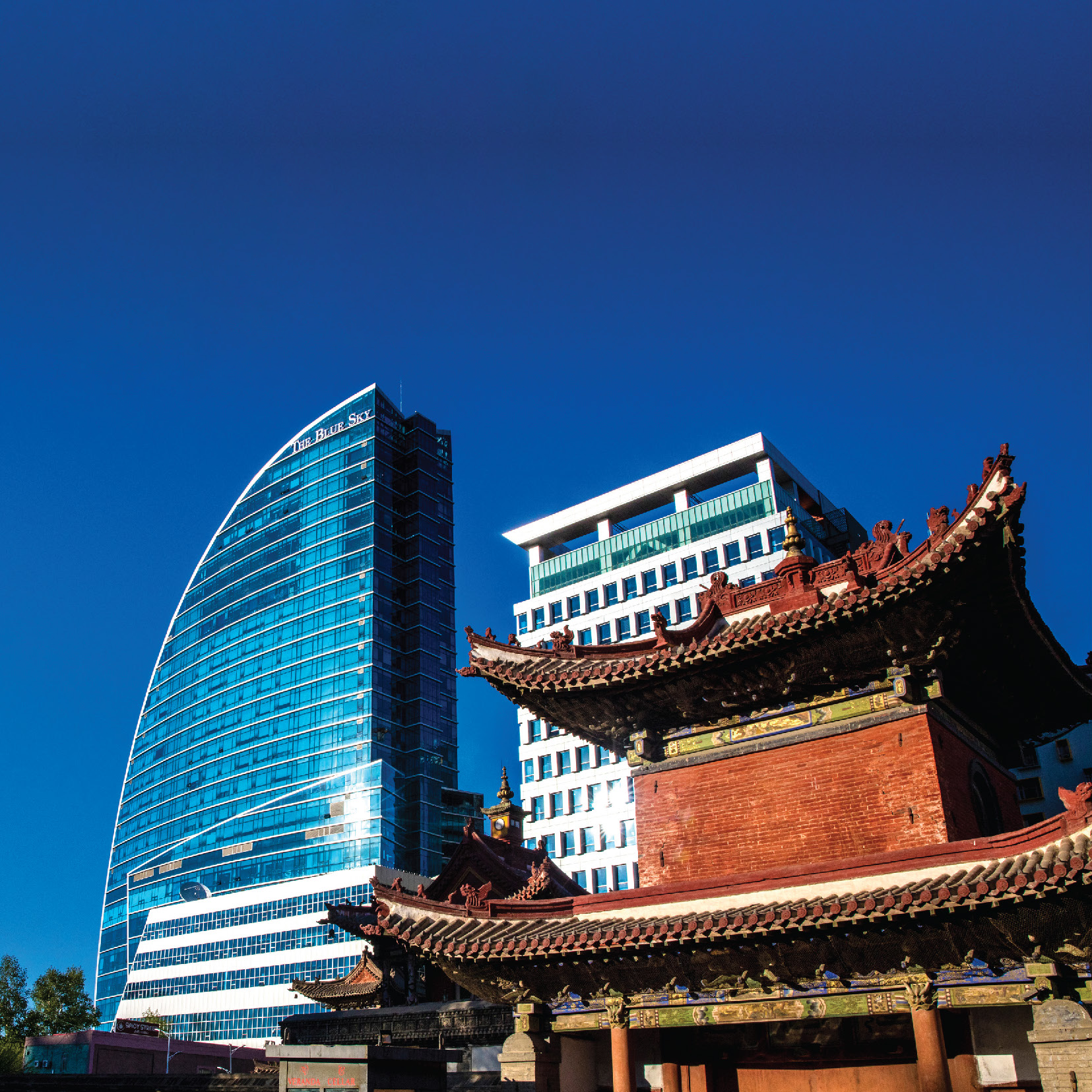All travel to the birthplace of steppe nomads starts in Ulaanbaatar. Originally called Urguu it was founded 375 years ago on the shores of Shireet lake in Central Mongolia. Since then the city has moved several times before settling where it is today.
The city, nicknamed UB, will surprise you when you compare it with those settled thousands of years ago. However, once you learn about the nomadic lifestyle and culture of Mongols, you will have a better understanding of these surprises. This is the hospitable and friendly city of Ulaanbaatar, capital of authentic nomads.
The reason why gers, invented centuries ago for nomadic living, are still used when households have settled in an urban environment, is to save on the cost of living. Also, many Mongolians prefer to live in a felt ger – even if only for the summer months. Many families in ger districts have not only gers, but also wooden houses. The minimum size of a lot in the city is 0.7 hectares. Intergenerational family household is a common portray of Mongolia.
If you climb any mountain surrounding the city, you will see the city as if in the palms of your hands. Ulaanbaatar has changed continuously since its establishment in the Tuul river valley. This was not only due to natural evolution, but political ideology. The only religious site that survived the purges was Gandantegchinlen monastery.
The monastery never went silent. Monks prayers, bells, and religious drums could be heard even during the time when religion was banned. It is now home to an 26.5 meter high statue of Megjid Janraisag Boddhisatva. The statue was created twice, as it was destroyed by communists in 1911.
During the communist years, Ulaanbaatar was a city of rectangular concrete buildings, all in clear lines, according to a central plan. It was renowned as the “Asian White Princess,” home to everything a city needed such as a circus, an opera, theaters, universities, libraries, and more.
On a windy spring morning 70 years of history was completely changed overnight, and Mongolia became a democratic country. Since then, Western style tall glass buildings have emerged and the city exploded with development. This change is continuing side by side with ancient buildings and historical gers you will find new hotels and buildings.
Ulaanbaatar is probably the only place where you can see a luxury boutique and a traditionally dressed horse-riding nomad in the same frame. You can’t imagine Ulaanbaatar without its fashionable, confident young women and men. When you see women in high heels, walking on streets covered in ice, you are getting a glimpse of the bravery and confidence of ancient Mongolian women who fought on horseback to save their husbands’ lives.
Ulaanbaatar is the capital and largest city of Mongolia, blending modern urban life with rich cultural heritage. Here are some key highlights:
- Gandan Monastery: The largest and most important Buddhist monastery in Mongolia, home to the 26-meter tall statue of Avalokitesvara (Migjid Janraisig).
- Sukhbaatar Square: The central square of Ulaanbaatar, featuring statues of Genghis Khan and other historical figures, surrounded by important landmarks like the Government Palace.
- National Museum of Mongolia: Offers an in-depth look into Mongolia’s history, culture, and heritage, featuring artifacts from the Mongol Empire and nomadic life.
- Zaisan Memorial: A hilltop memorial dedicated to Soviet soldiers, offering panoramic views of the city.
- Bogd Khan Winter Palace Museum: The former residence of Mongolia’s last king, showcasing artifacts and a unique glimpse into Mongolia’s past royalty.
- Choijin Lama Temple: A beautiful temple-turned-museum that provides insight into Mongolia’s Buddhist heritage and traditional architecture.
- Naran Tuul Market (Black Market): A bustling open-air market where you can find everything from traditional clothing to souvenirs.
- Gorkhi-Terelj National Park: Located just outside the city, it’s a popular destination for its stunning natural landscapes, rock formations like Turtle Rock, and activities such as hiking and horseback riding.
Ulaanbaatar serves as both the cultural heart and modern hub of Mongolia, offering visitors a mix of historic sites, vibrant culture, and glimpses of modern Mongolian life.

